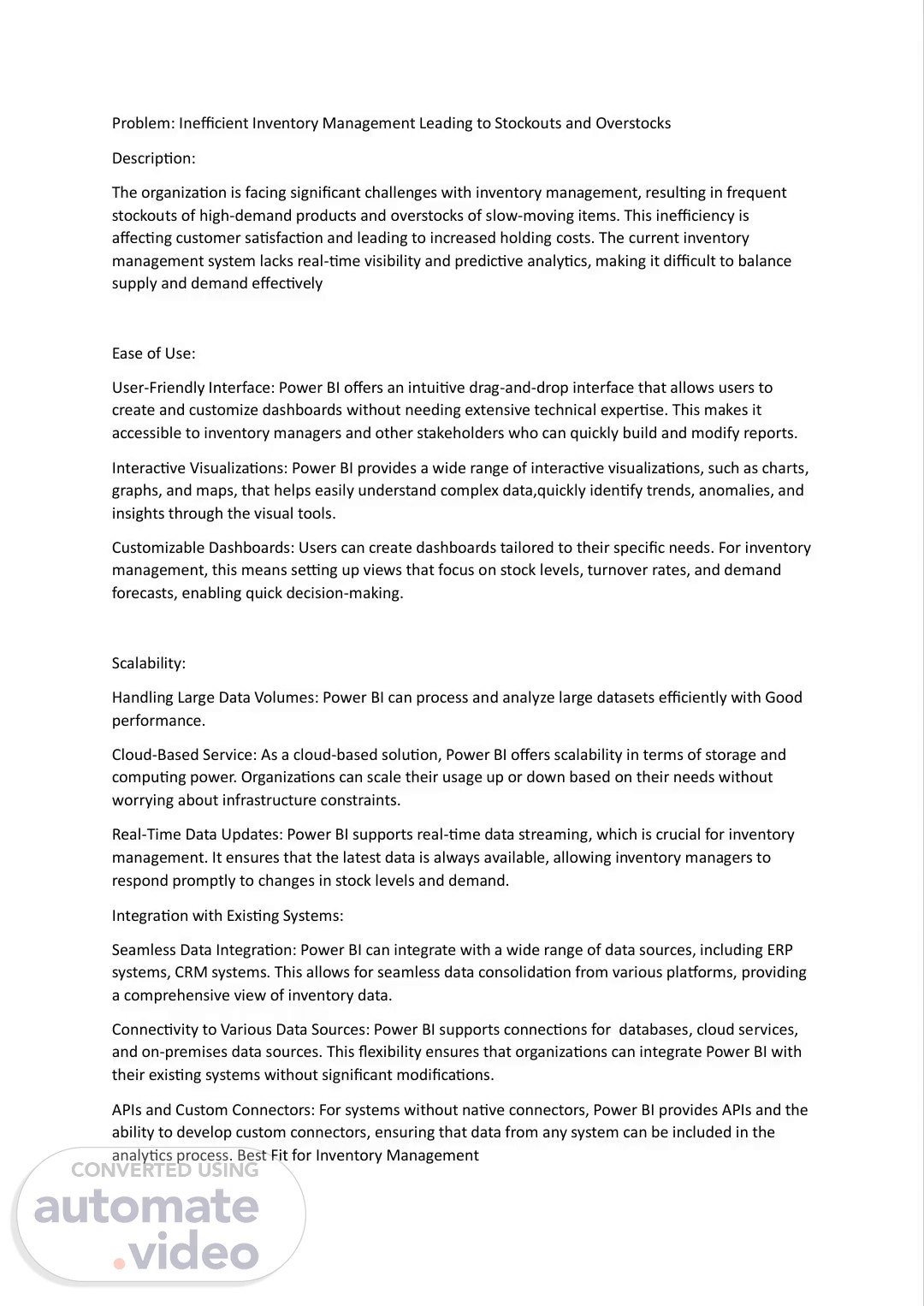Page 1 (0s)
[Audio] Problem: Inefficient Inventory Management Leading to Stockouts and Overstocks Description: The organization is facing significant challenges with inventory management, resulting in frequent stockouts of high-demand products and overstocks of slow-moving items. This inefficiency is affecting customer satisfaction and leading to increased holding costs. The current inventory management system lacks real-time visibility and predictive analytics, making it difficult to balance supply and demand effectively Ease of Use: User-Friendly Interface: Power BI offers an intuitive drag-and-drop interface that allows users to create and customize dashboards without needing extensive technical expertise. This makes it accessible to inventory managers and other stakeholders who can quickly build and modify reports. Interactive Visualizations: Power BI provides a wide range of interactive visualizations, such as charts, graphs, and maps, that helps easily understand complex data,quickly identify trends, anomalies, and insights through the visual tools. Customizable Dashboards: Users can create dashboards tailored to their specific needs. For inventory management, this means setting up views that focus on stock levels, turnover rates, and demand forecasts, enabling quick decision-making. Scalability: Handling Large Data Volumes: Power BI can process and analyze large datasets efficiently with Good performance. Cloud-Based Service: As a cloud-based solution, Power BI offers scalability in terms of storage and computing power. Organizations can scale their usage up or down based on their needs without worrying about infrastructure constraints. Real-Time Data Updates: Power BI supports real-time data streaming, which is crucial for inventory management. It ensures that the latest data is always available, allowing inventory managers to respond promptly to changes in stock levels and demand. Integration with Existing Systems: Seamless Data Integration: Power BI can integrate with a wide range of data sources, including ERP systems, CRM systems. This allows for seamless data consolidation from various platforms, providing a comprehensive view of inventory data. Connectivity to Various Data Sources: Power BI supports connections for databases, cloud services, and on-premises data sources. This flexibility ensures that organizations can integrate Power BI with their existing systems without significant modifications. APIs and Custom Connectors: For systems without native connectors, Power BI provides APIs and the ability to develop custom connectors, ensuring that data from any system can be included in the analytics process. Best Fit for Inventory Management.
Page 2 (3m 14s)
[Audio] Power BI's ability to handle real-time data streaming ensures that inventory levels are always up-todate, allowing managers to make informed decisions quickly. The integration with predictive analytics tools helps in accurately forecasting demand based on historical data, which is crucial for effective inventory planning. Power BI's alerting features and seamless integration with communication platforms ensure timely notifications, enabling proactive inventory management. Advanced visualizations and custom metrics allow for detailed analysis of inventory turnover rates, helping to identify slow-moving items and optimize stock levels. Dynamic dashboards with real-time data updates ensure that reorder points are accurately calculated and visualized, reducing the risk of stockouts. Integration with ERP systems provides insights into supplier performance, helping to ensure reliable stock replenishment..
